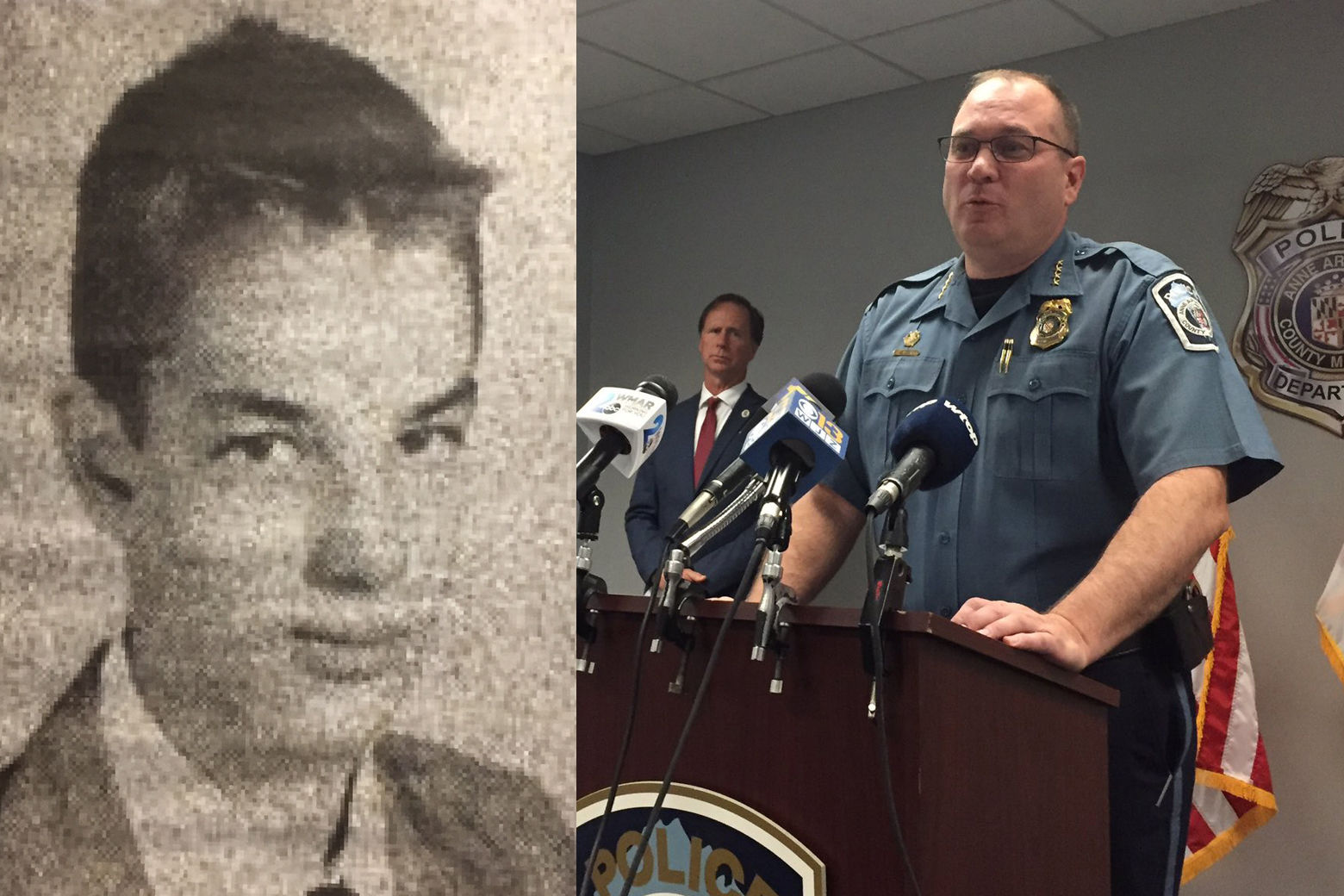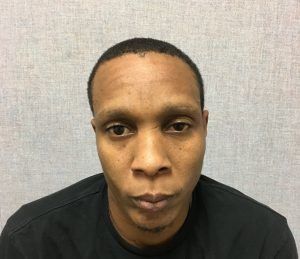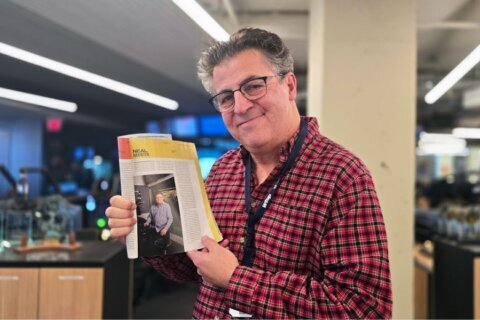This is Part 3 of a three-part series on WTOP.com about DNA evidence, its evolution and how it’s being used in the D.C. area and beyond.
READ PART 1: A Reston company that helps police crack DNA evidence
READ PART 2: How police use DNA evidence to work backward, and then forward

When Anne Arundel County police Chief Tim Altomare spoke at a news conference to announce the identity of the victim in a decades-old murder case, he addressed the family of Roger Kelso with compassion. On the verge of tears, he told Kelso’s siblings, who hadn’t seen their brother since 1962, how this case is an example of how much the department cares about finding justice for crime victims and how his department will never stop fighting for them.
Kelso’s body was found in a trash can by construction crews working to build Marley Station Mall back in 1985, and he would only be known as “John Doe” for the next 34 years. With a crime scene that had been excavated and basically destroyed by all the construction, any evidence that could help break the case open was certainly destroyed.
With nowhere else to turn, the department partnered with Reston-based Parabon Nanolabs, a technology company that studies DNA, reading it like a programmer might look at computer code. It was the second time the department had worked with Parabon to break open a case that had gone cold, and Altomare said the technology provided residents with “new hope” when it comes to attaining closure for someone who lost a loved one.
Then Altomare provided a strongly worded defense of that technology, with a hint of anger in his voice.
“The technology involved here is extremely important to policing,” said Altomare. “There is a movement in this state to prevent us from accessing and using that technology to bring closure to families. It is ill-intended as legislation, and it would be negative in its consequence.”
Altomare was referring to a piece of legislation introduced earlier this year in the Maryland House of Delegates. Like lots of legislation introduced for the first time, HB 30 never made it out of committee. If it had passed, the legislation would have prohibited police from using public DNA databases to help track down suspected killers, rapists and other violent criminals.
Del. Charles Sydnor (District 44B) said he’ll try to pass it again this year.
“I want crimes solved in constitutional manners,” said Sydnor, who works as a lawyer in Howard County. He’s convinced this practice does not do that.
Sydnor points to a law that has been on the books since 2008 and prohibits police departments from using the state’s own DNA database, the Combined DNA Index System (CODIS) to search for anyone beyond a direct match. The cops can’t take a DNA sample left at a crime scene and go through that database hoping to find a near match with a relative.
Maryland and D.C. are the only jurisdictions with such a law on the books.
Sydnor argues that if Maryland doesn’t allow this kind of digging into their own databases, then it makes sense to extend that prohibition to commercial databases.
It’s a point that Natalie Ram, an assistant law professor at the University of Maryland School of Law, also tried to make during a hearing on HB 30 earlier this year.
“Maryland has already acted to disapprove of familial searches,” said Ram, who told lawmakers that the “recent developments,” advances in the technology and how it’s used, only “undermined Maryland’s judgment that familiar DNA searches are wrong.”
“If left unchecked,” she said, “more than 50% of Marylanders may soon be reachable through a familial DNA search regardless of whether a particular individual has voluntarily shared their DNA on any platform.”
What is GEDMatch?
The database used most often by Parabon and the police departments that work with them is called GEDMatch. It was started by a Florida man named Curtis Rogers, whose interest in the “Rogers” surname led him to set up a website so various Rogerses from around the country could determine how or whether they were related.
Initially, that involved a lot of emails back and forth as various Rogerses compared notes. To make comparisons easier, those who were involved in what he called “The Rogers Project” came up with a program that made it easier for various people with the last name Rogers to determine their relation.
“The program turned out to be so good we said, ‘Let’s share this with other genealogists,’ and that was the beginning of GEDMatch,” Rogers said.
The more popular commercial DNA sites, such as Ancestry or 23andme don’t share their information with anyone else — neither police departments nor distant relatives who may have used another site. GEDMatch became one of the databases where people could load their DNA results to share more broadly with other distant matches. This way, someone who used Ancestry.com to trace their family tree can connect their lineage with someone who might have chosen a competing site, such as 23andme.com, without subscribing to multiple commercial DNA testing companies.
In the GEDMatch terms of service, Rogers said, users are warned that their information could be used in ways beyond finding family members. For instance, he estimates more than 10,000 adopted children have found their biological parents through the site — which is not what he envisioned.
The site’s popularity with police is also something he said he never imagined would happen. It was used by police to catch the Golden State Killer, for instance, which Rogers said was a surprise even to him. He said he had trouble sleeping for the next two weeks as he debated whether his site’s terms of service had been violated.
“One of the big misunderstandings is people think we’re showing DNA,” said Rogers. “We show no DNA on our site. We only show matches that are a result of people having similar DNA. We don’t show any DNA.”
The site, reiterated Rogers, doesn’t show any health information that could result from DNA testing; doing so would violate the law.
Nonetheless, not everyone was happy the site was so cooperative in divulging information to law enforcement. This also caught Rogers off guard. And while it’s his own wish that they would cooperate, he added, “We created an opt-in, opt-out system and people can make up their own mind.”
He admitted his terms of service have evolved since then, to the point that people are now automatically opted out when they sign up for the site, unless they specifically opt back in. When that happened, Parabon’s CEO and Founder Steven Armentrout said it was quickly apparent to investigators.
A database of between 1 million and 1.2 million people “effectively went to a database size of zero for a short period of time,” said Armentrout. “I understand now that 100,000 people have opted back in, and that’s increasing over time.”
He said he hopes that’ll continue to increase.
Rogers said “the warmest, just, very satisfying type of emails that I could ever get” come from relatives of crime victims who finally got the closure they were hoping for after the database was used to help track down the suspect.
But even when police do go to GEDMatch, Rogers pointed out they still needed an experienced genealogist to make the results work. But none of that satisfies the concerns of Del. Sydnor, and other critics of this practice, including the Maryland ACLU.
“CODIS is full of DNA of people convicted of crimes,” Sydnor said. “To me it doesn’t make sense if we’re saying that you can’t use CODIS, which [includes] people who have committed crimes … that the state would be OK with your using a database full of Joe Citizens and people who haven’t done anything except be curious about their ancestry. To me it just doesn’t makes sense.”
But it does make sense to supporters of the more unregulated status quo. Armentrout notes that the CODIS database is full of DNA “where the samples have been compelled” — that is, they were required to provide a DNA sample to the state upon their conviction of a violent crime.
“Genetic genealogy is searching volunteered DNA,” he argued.
But the critics of the practice say that’s true only to an extent.
Sydnor said, “I’m giving consent because I’m uploading the DNA” into databases like GEDMatch. But my family members, they’ve given no consent. And yet they’re still subject to it. And this is for years to come. Anyone and everyone that’s related to me.”
“I’m not sure any of us even know who all our third or fourth cousins are,” Natalie Ram, assistant law professor at U.Md. told lawmakers during a legislative hearing on Sydnor’s bill back in January.
‘Long-term damage’

That’s essentially what distant relatives of a man now behind bars for raping women told police in Montgomery County, who used information they provided to close a case that had been cold for more than a decade. Police turned to them after they showed a slight match in a public DNA database. But police concede those relatives didn’t even know they were related to a man named Marlon Alexander, who is now serving two life sentences for those attacks many years ago. He’s currently asking a judge to reduce that sentence.
And right now, there are no parameters that determine which crimes this technology can be used to solve, though last week the Department of Justice announced an interim policy on this type of technology at the federal level.
The policy, which takes effect Nov. 1, says the technology can be used to solve rapes and murders, including the identification of murder victims. Law enforcement officials wanting to go beyond that scope need to “present a substantial and ongoing threat to public safety or national security.”
The use of genetic genealogy still could be used on the state level for smaller and smaller cases, which concerns Sydnor.
“When we allow law enforcement to run over The Constitution willy nilly, we’re really doing some long-term damage to the principles of our county,” said Sydnor. “We have a line that most other states don’t have. Right now in our state … the way law enforcement is going about this is unregulated.”
Sgt. Christopher Homrock, who leads the Montgomery County Police Department’s cold case unit, said, “If (Sydnor) could be with us and be with these family members when we tell them we found out who murdered their loved one, I think that probably would make a difference to seeing from our point of view on how big this work is.”
Sydnor said his cousin’s murder in the 1990s remains unsolved today, and he isn’t backing down.
“I want those crimes solved,” Sydnor said. “Make no mistake: I want people who have committed crimes to be addressed.”
But law enforcement is “operating outside the intent of the law” that’s already on the books in Maryland, he argued. “You have my DNA and I have to prove to you my innocence because you said I’m guilty.”
But until state lawmakers act, or a judge issues a ruling saying otherwise, police departments around Maryland, like departments everywhere else, are likely to continue using this technology to close cases that had been unsolved for years, if not decades.
Listen to John Domen’s series
Part 1
Part 2
Part 3
Part 4
Part 5








